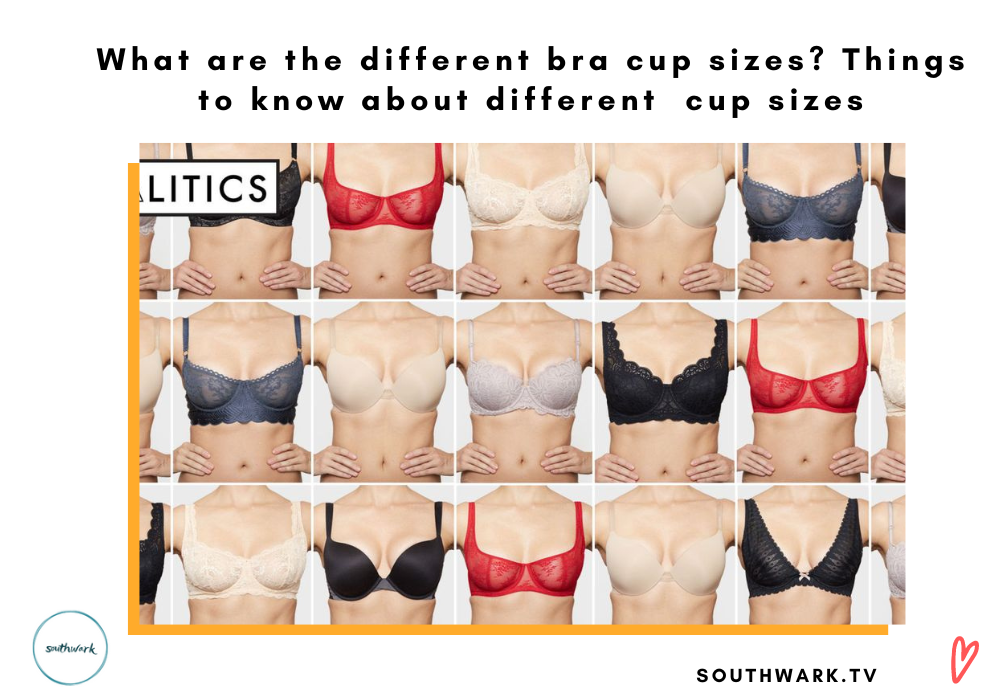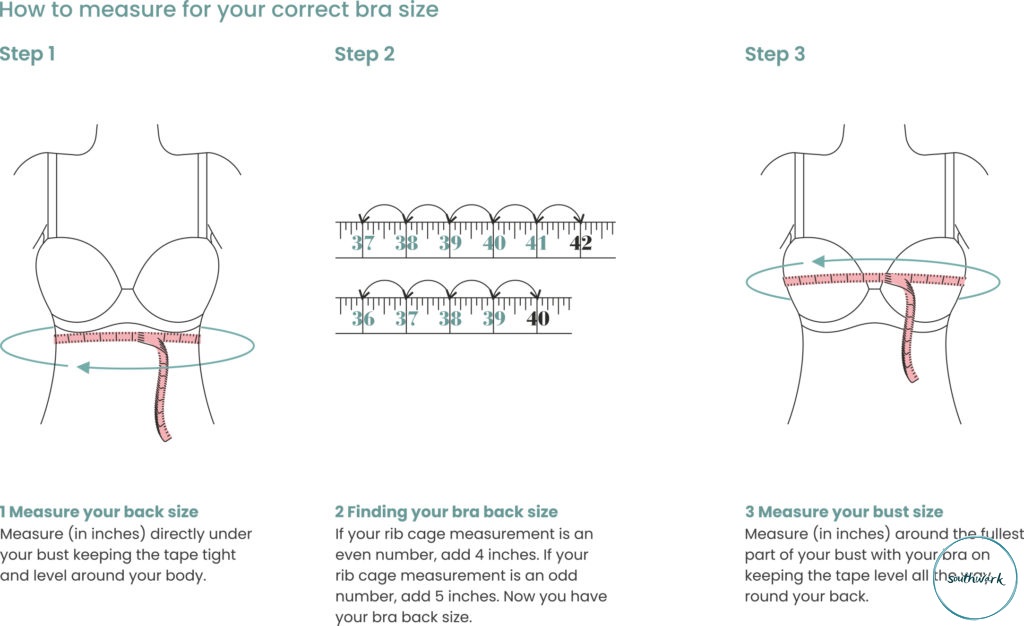The bra size measurements is determined by two factors: band size and cup size. Band size typically ranges from 33 ⅘ to 43 ¼ inches and is measured underneath the bust. Cup size, however, isn’t measured directly but rather estimated by difference between bust and band measurement.
For example, if there’s a 1-inch difference between bust and band you’re an A cup; 2-inch difference is a B cup, 3 inches is a C cup, and so on. As you move up the letter scale in alphabetical order from A to E the cups become deeper wider for different sizes.
But aside from having different lettered cups sizes there are also different cup sizes within each letter category that range even further than just A to E cups as they become bigger – thus allowing for customers to have much more varied options when selecting their ideal fit.
For instance, if someone was looking for a DD cup they could choose from larger DD+ or smaller DD- variants depending on which option fits their measurements best closely. By understanding these differences in sizes it’s much easier to find the right fit in terms of breast size that makes the wearer feel most comfortable and confident when wearing their bras accordingly.

What does cup size mean? What are the different bra cup sizes?

Cup size refers to the sizing system used to categorize bras by their relative volume, or capacity for breast tissue. There are a variety of different cup sizes in bra, with each size representing an 8-inch difference in bust dimensions. Some of the most common cup sizes include A, B, C, D, and DD/E.
While the exact measurements and dimensions that correspond to each cup size can vary depending on the brand or style of bra you’re wearing, there are some general guidelines that can help you determine what size is right for you. For example, if your chest measurement is 34 inches and your bust measurement is 36 inches, you would likely need a 34B-sized bra. Similarly, if your chest measurement is 36 inches and your bust measurement is 40 inches, you would likely need a 36D-sized bra.
Depending on your Band Size, Cup Volume is Different

Starting with the primary measurement (band size is ultimately most important as the band, not the straps, do the main work of supporting your breasts), as band size goes up, cup volume increases. For example, a 34B has more breast volume than a 32B, and a 38C has more breast volume than a 36C. This is because the band measurement affects how much “spillage” the bra will allow in each cup size.
Whatever your bust or chest measurements are, it’s important to consider both measurements when selecting a bra that provides optimal support and comfort. And if you’re unsure what size you need, be sure to consult with an experienced fitter at your local lingerie store to help guide you towards finding the right fit for your unique shape and body type.
Next, we will have a look at Guide to Measure your Bra Size.
Guide to Measure your Bra Size

Cup bra size chart
| Bust/band difference in inches | US cup size | UK/AU cup size |
| <1 | AA | AA |
| 1 | A | A |
| 2 | B | B |
| 3 | C | C |
| 4 | D | D |
| 5 | E or DD | DD |
| 6 | F or DDD | E |
| 7 | G or DDDD | F |
| 8 | H | FF |
| 9 | I | G |
| 10 | J | GG |
| 11 | K | H |
| 12 | L | HH |
| 13 | M | J |
| 14 | N | JJ |

Bra cup sizes are determined by the disparity between the measurement of the bust and the measurement of the band. Each cup size represents an increment of one inch from the previous size. The most commonly used bra cup sizes are A, B, C, D, DD (sometimes also referred to as E), and E (or occasionally known as DDD). Here’s a breakdown of the distinctions among these cup sizes:
A cup: An A cup signifies a 1-inch differential between the bust and band measurements, categorizing it as a smaller cup size.
B cup: A B cup designates a 2-inch difference between the bust and band measurements, making it slightly larger than an A cup.
C cup: A C cup represents a 3-inch disparity between the bust and band measurements, classifying it as a medium cup size.
D cup: A D cup corresponds to a 4-inch difference between the bust and band measurements, making it a larger cup size.
DD cup: A DD cup (also referred to as E in some regions) indicates a 5-inch difference between the bust and band measurements, making it a notably large cup size.
E cup: An E cup (sometimes known as DDD in certain areas) denotes a 6-inch difference between the bust and band measurements, categorizing it as an even larger cup size than DD.
It’s crucial to recognize that cup sizes may vary among different brands and styles of bras, and the cup size is just one aspect of finding the perfect bra fit. Factors like band size, strap placement, and other considerations also influence the fit and comfort of a bra.
What is the cup size of a medium bra?
With standard sizing, you can expect a 32C and a 32D to be bracketed together as a Small, a 34C and a 34D to both be Medium, a 36C and 36D to equate a Large, and so on, up through the fit range.
What are the different bra sizes? What does the number and letter represent respectively?
The number represents the band size around the woman. Letter represents the cup, How big the boob is.